Kenneth Steimel
Morphology Matters: A Multilingual Language Modeling Analysis
Dec 11, 2020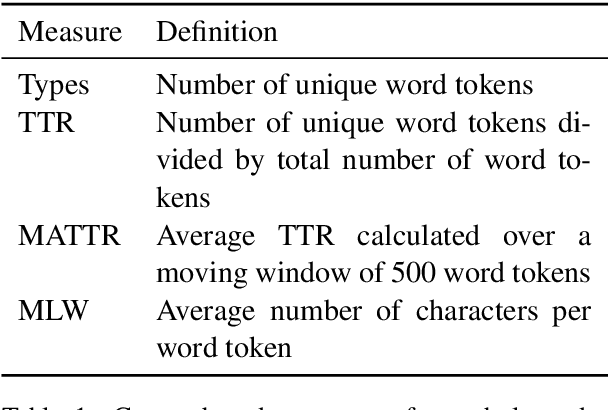

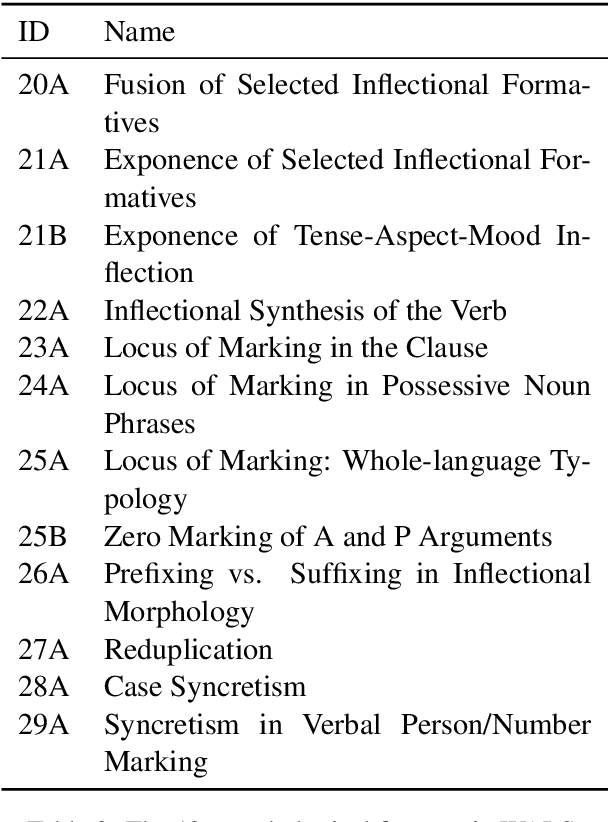
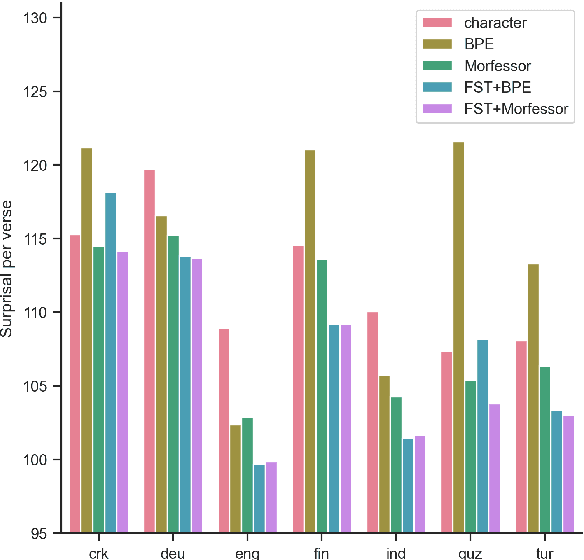
Abstract:Prior studies in multilingual language modeling (e.g., Cotterell et al., 2018; Mielke et al., 2019) disagree on whether or not inflectional morphology makes languages harder to model. We attempt to resolve the disagreement and extend those studies. We compile a larger corpus of 145 Bible translations in 92 languages and a larger number of typological features. We fill in missing typological data for several languages and consider corpus-based measures of morphological complexity in addition to expert-produced typological features. We find that several morphological measures are significantly associated with higher surprisal when LSTM models are trained with BPE-segmented data. We also investigate linguistically-motivated subword segmentation strategies like Morfessor and Finite-State Transducers (FSTs) and find that these segmentation strategies yield better performance and reduce the impact of a language's morphology on language modeling.
Neural Polysynthetic Language Modelling
May 13, 2020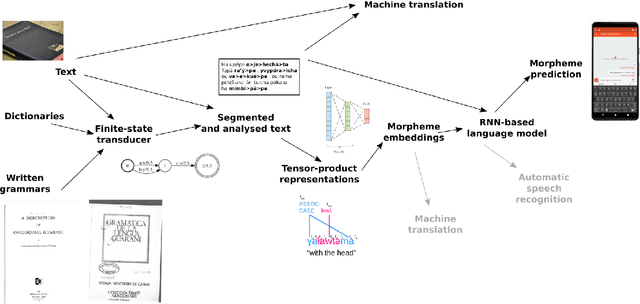
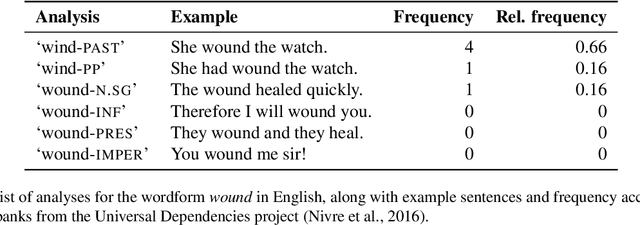

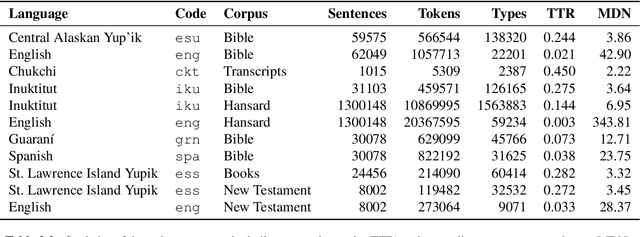
Abstract:Research in natural language processing commonly assumes that approaches that work well for English and and other widely-used languages are "language agnostic". In high-resource languages, especially those that are analytic, a common approach is to treat morphologically-distinct variants of a common root as completely independent word types. This assumes, that there are limited morphological inflections per root, and that the majority will appear in a large enough corpus, so that the model can adequately learn statistics about each form. Approaches like stemming, lemmatization, or subword segmentation are often used when either of those assumptions do not hold, particularly in the case of synthetic languages like Spanish or Russian that have more inflection than English. In the literature, languages like Finnish or Turkish are held up as extreme examples of complexity that challenge common modelling assumptions. Yet, when considering all of the world's languages, Finnish and Turkish are closer to the average case. When we consider polysynthetic languages (those at the extreme of morphological complexity), approaches like stemming, lemmatization, or subword modelling may not suffice. These languages have very high numbers of hapax legomena, showing the need for appropriate morphological handling of words, without which it is not possible for a model to capture enough word statistics. We examine the current state-of-the-art in language modelling, machine translation, and text prediction for four polysynthetic languages: Guaran\'i, St. Lawrence Island Yupik, Central Alaskan Yupik, and Inuktitut. We then propose a novel framework for language modelling that combines knowledge representations from finite-state morphological analyzers with Tensor Product Representations in order to enable neural language models capable of handling the full range of typologically variant languages.
 Add to Chrome
Add to Chrome Add to Firefox
Add to Firefox Add to Edge
Add to Edge